How a more price conscious consumer affects product choices
Monday, 28 September 2020
The announcement that we have entered a recession and with the new job support scheme replacing the furlough scheme at the end of October, many consumers are unsure of their financial future.
This has meant that many consumers are looking after the pennies and making sure they budget to make their money go further. A third of consumers have had some change to their household employment status, meaning many will be working to tighter budgets.
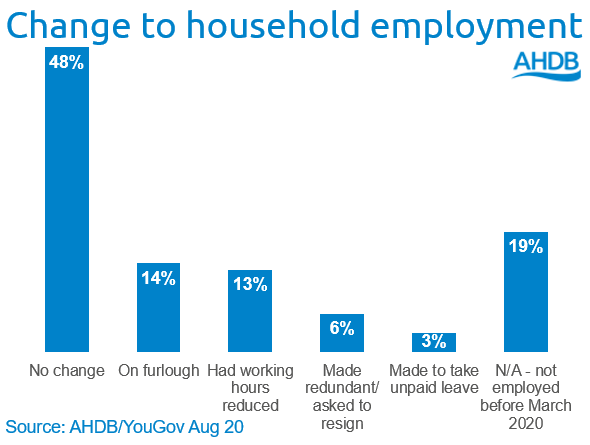
So it would be expected that consumers would tighten the purse strings and look to get the best value during their weekly grocery shop.
How much is price growing as a driver?
Consumers claim the cost of a meal is one of the main things they take in to account when deciding what to eat, with 55% claiming it is important. This factor is second only to time to cook. We have seen cost grow in importance over the last three months, whereas time to cook has been in decline (source: AHDB/YouGov Aug 20)
Over half of consumers claim they have become more price conscious or have changed the way they allocate their shopping budgets since April.
Who say that price is a growing driver?
Overall, 43% of consumers say they have become more price conscious. Those more likely than average to be price conscious are lower-income households, 16-34 year-olds and households with children. The more children in the household, the more price conscious they are: 40% of households without children have become more price conscious, rising to 57% of households with three or more children (source: AHDB/YouGov Aug 20)
How does this compare across different categories?
Price has seen the biggest growth as a driver across meat, dairy and potatoes. A third claim price has become more important when buying meat, with nearly a quarter saying so for dairy and potatoes.
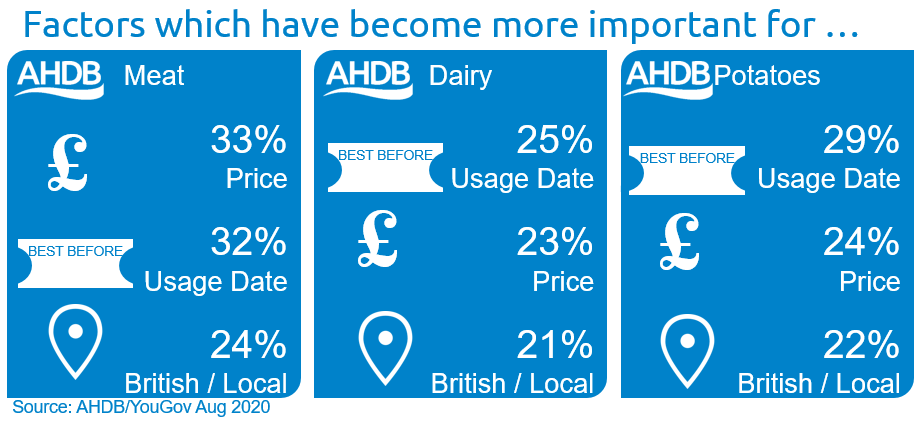
Price is now the most important factor for meat but usage date remains most important for dairy and potatoes, thought this has dropped back in favour of price since the start of lockdown.
Price is important for the majority of food categories with little variation. In research from IGD, the importance of price to product choice had a mean of 7.5 out of 10 across total grocery and was second only to product quality. When we look at this by category, there is little change in total food, with milk scoring lowest at 7.0 out of 10 and fish and seafood scoring highest at 7.7 out of 10.
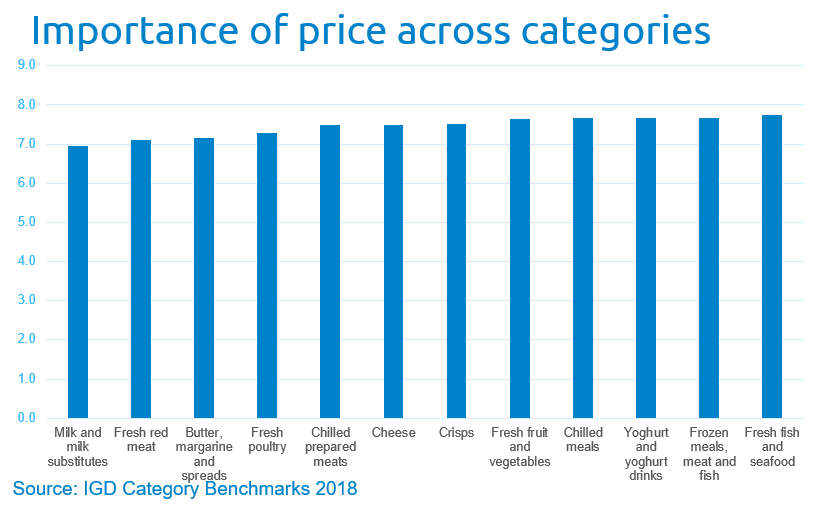
How will people change the way they shop?
When money is tight, people tend not to buy less food. In fact, we expect in-home volumes to remain heightened as consumers remain hesitant to eat out.
Consumers claim a variety of methods to try to save money when shopping, as detailed in the chart below:
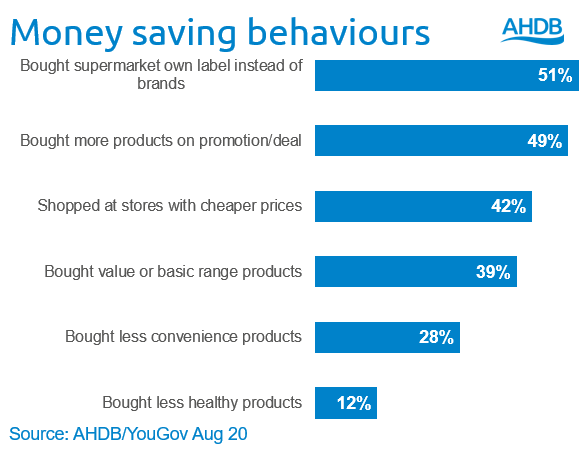
Consumers also claim that shopping online helps to save money, as they are less likely to impulse buy than in store and are able to buy more items on deals.
It’s not just in store where consumers are making changes to save money, consumers are also looking to save the pennies with how they cook and eat. According to IGD, reduced spend on eating out and cooking more meals from scratch are the main ways consumers are saving money out of store.
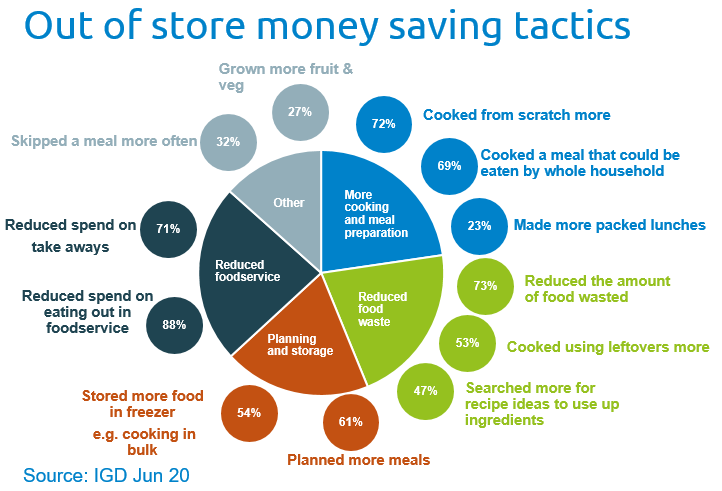
Summary
These money-saving behaviours can hold opportunities. Increased cooking from scratch tends to benefit fresh and chilled categories, while attempts to reduce food waste can help products which are or can be frozen and those with innovative packaging.
If consumers reduce the amount they eat out, many still want to have treat or celebratory occasions, which can lead to a boost for premium products. Encouraging date nights in or birthday meals could meet those consumer needs and encourage consumers to trade up.
As consumers plan more and impulse buy less, it’s important to influence consumers at home when they’re deciding what the cook and writing their shopping lists.
While consumers are becoming more price conscious, it isn’t the only driver of food choice. Price has to balance with other key drivers such as versatility, taste and convenience.
Related content
Topics:
Sectors:


